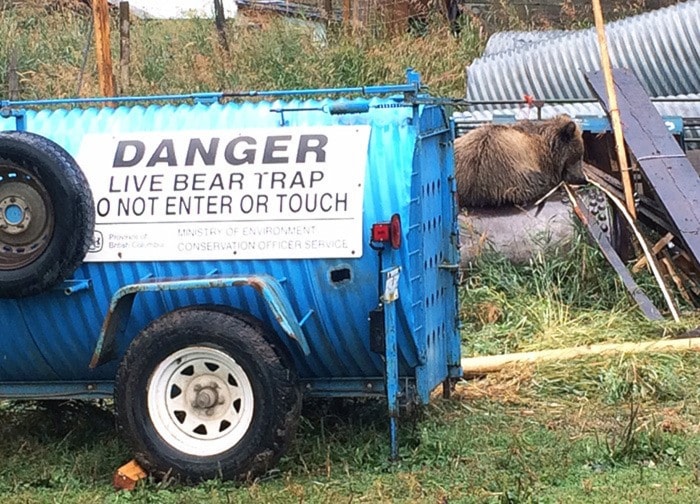Arne Petryshen
With the many bear sightings and the frequency of those encounters that turn nasty for the bears involved, it may be nice to hear a story with a happier ending.
Jared Connatty, conservation officer, said in the case of a mature sow and her cubs, the results were positive for all involved.
On Aug. 31, Conservation Officers trapped the three bears on a large ranch property just outside of Hosmer, near Fernie. Connatty noted there were ongoing occurrences involving the bears, though nothing too serious.
The bear family — a smaller sow with two cubs, each around a year and a half old — had been sighted by people in the area foraging on the natural food sources.
“Once in a while they would slip in and grab the odd chicken, kill a chicken — that kind of thing,” he said. “We ended up deploying some trapping efforts to see if we could catch them and ended up catching all of them.”
Connatty said the circumstances are always different. He compared this to the bear euthanized recently in the Jimsmith area. That one was a young male grizzly specifically targeting chicken coops and getting into conflict that way.
“Whereas this one kind of still showed some natural, normal behaviours,” he said. “We collared the sow and ear pegged both of the young ones there and did what is called a hard release on site.”
The collar is another mechanism that allows the COs to monitor the sow.
Connatty said the intent is to give those bears a really negative experience with that area so that they avoid the area in the future.
“Right now we’re just monitoring her collar. She hasn’t left the area, but she hasn’t come into conflict.”
Connatty explained the nature of the hard release.
“We utilize the sirens on the trucks,” he noted. “When they leave the trap, after they have fully recovered from being immobilized, they come out of the trap and are shot with rubber bullets. It’s not a lethal round, it’s just some pain compliance, some bangs and some loud noises, things like that. It’s a real stressful situation that they don’t like. That’s the whole point, that they don’t like it.”
They let the bears go one at a time into the bush close together.
“It doesn’t happen very often, because it’s not often we have a bear that really fits that description.”
